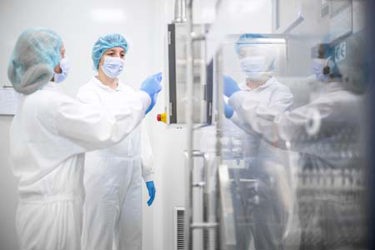Optimization Of Nuclease Digestion Unit Operation In A Lentiviral Vector Process For Improved Reduction Of DNA Impurities
By James Xin, Nhi Tran, Chyan-Jang Lee, Briana Orlando, Daniel Kennedy, Miranda Williams, Christine Beaudry, Lorenz Ponce, Chase Waxman, Arianna Spooner, Alianna Provencal, Hannah Paczkowski, Emily Sinclair, Mercedes Segura, and Bojiao Yin

As the Cell and Gene Therapy (C & GT) field expands, more and more new innovated therapies and treatments arise. To ensure the safety of these potentially life-changing treatments, one area of focus is around the process-related DNA impurity levels, such as host cell DNA (hcDNA) and plasmid DNA (pDNA), which are typically the concerning process-related impurities for viral vectors. However, due to the complex nature of viral vector production, many factors can inhibit proper reduction of these DNA impurities. Even with the addition of commonly used commercial endonucleases (e.g. Denarase®), the desired reduction in the DNA levels might not be sufficient to meet process or regulatory recommendations.
Here, we provide the statistical analysis results based on several DoE studies for reduction of hcDNA and pDNA levels in our Lentiviral Vector (LVV) platform process, LentiPeak™. Focusing on several critical parameters including nuclease concentration, supplement concentration, incubation time, and incubation conditions (pH and temperature), this data shows the optimal factors and ranges in the nuclease digestion step. In addition, our data characterizes the impact for each significant parameter to identify the relationship toward DNA impurities reduction for both in-process samples and in the final LVV pool to fully understand the carry through impact of the nuclease digestion step.
With the increasing need of viral vectors in the C & GT field, many upstream processes are evolving to meet production demands with higher cell densities and higher plasmid DNA concentrations. This factor, coupled with industry driven prioritization for patient safety, creates a need for processes, especially the nuclease digestion unit operation, to ensure the adequate clearance of DNA impurities. With this data, we hope to highlight the key parameters which support optimal nuclease digestion to be applied to all viral vector processes, and thus streamline the work needed in process development for clearance of the DNA impurities.
Get unlimited access to:
Enter your credentials below to log in. Not yet a member of Cell & Gene? Subscribe today.
